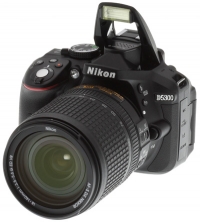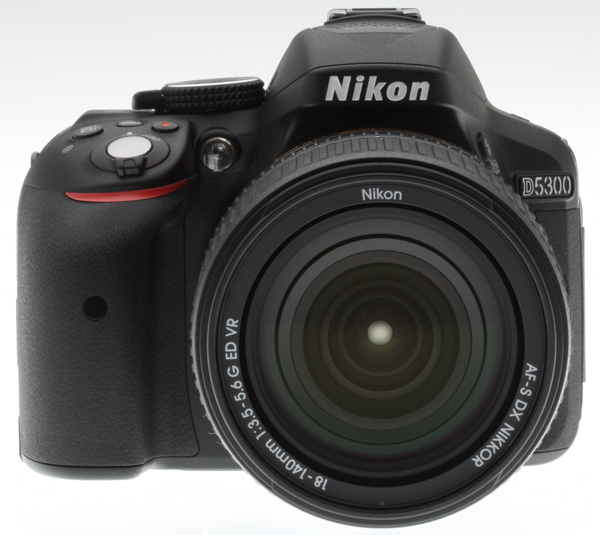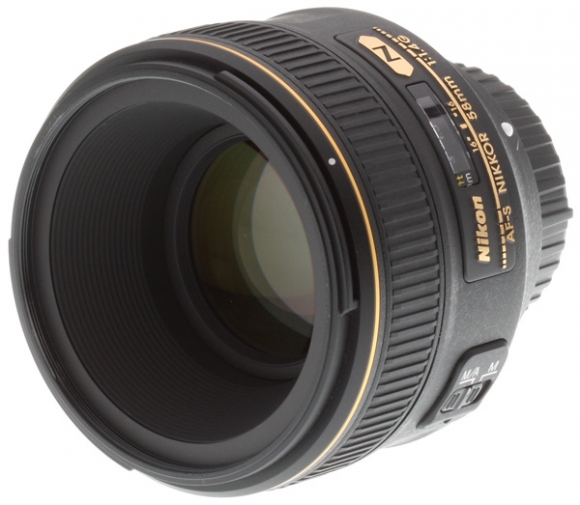Nikon D5300 review: First impressions of Nikon’s latest consumer DSLR with ramped-up resolution and built-in Wi-Fi
posted Thursday, October 17, 2013 at 12:01 AM EDT

The Nikon D5300 may mark an evolutionary -- rather than a revolutionary -- upgrade over the less-than-one-year-old D5200. However, the camera's improvements are quite considerable, potentially positioning the DSLR as a compelling, more affordable option for advanced amateurs who may be eyeing the higher-end, prosumer D7100, as well enticing owners of Nikon's consumer-level DSLRs to take a step up. The most noticeable enhancement appears to be the D5300's built-in Wi-Fi functionality, which makes it the first Nikon DSLR that doesn't rely on an accessory dongle (WU-1a/b) to share images wirelessly or provide remote control capture when paired with smart devices. The D5300 is also the first Nikon DSLR to feature built-in GPS.
In addition to its Wi-Fi savviness, the Nikon D5300 holds a few other advantages over its predecessor, the D5200, and in many instances rivals the D7100. For one, the D5300's enhanced DX-format, 24-megapixel APS-C-type CMOS sensor should help maximize the camera's resolving power by omitting the optical low-pass filter (as Nikon did earlier with the D7100). If the D5300 can minimize moiré and anti-aliasing as well as the D7100 did, forgoing the OLPF in a consumer-friendly DSLR could be the move that opens up a realm of incredible detail and sharpness to a mass audience.
What's more, the D5300 incorporates Nikon's latest processor -- the EXPEED 4 -- which even the company's most recently announced full-frame prosumer DSLR, the D610, doesn't have. This next-generation imaging engine purports to improve the camera's speed over the D5200, as well as better optimize the DSLR's detail-versus-noise output and enhance color accuracy. The Nikon D5300's sensitivity has also been bolstered, now spanning a standard ISO range of 100 to 12,800 (compared to a standard max 6400 for the D5200), as well as reaching as high as ISO 25,600 in expanded sensitivity mode. Hopefully this will result in improved low-light image quality, but we'll have to wait until we get the camera into the IR Lab to test it out. Meanwhile, the D5300's continuous shooting speed clocks in at about 5 frames per second at full JPEG resolution, roughly the same as the earlier model, but still above average for DSLRs in its class.
Find out more about Nikon's latest consumer DSLR in our first impressions Nikon D5300 review.
Or place your pre-order with trusted Imaging Resource affiliates Adorama or B&H now:
Adorama
- Nikon D5300 -- Black, body only
- Nikon D5300 -- Gray, body only
- Nikon D5300 -- Red, body only
- Nikon D5300 -- Black, with 18-140mm kit lens
B&H
- Nikon D5300 -- Black, body only
- Nikon D5300 -- Gray, body only
- Nikon D5300 -- Red, body only
- Nikon D5300 -- Black, with 18-140mm kit lens

Alongside the D5300, Nikon also announced the AF-S NIKKOR 58mm f/1.4G prime lens for both full-frame (FX) and crop-format (DX) DSLRs. Designed ideally for low-light shooting, portraits and video, the new 58mm pays tribute to the renowned Noct NIKKOR 58mm f/1.2 lens.
It features a rounded nine-blade diaphragm engineered to produce a pleasing circular bokeh, as well as a Nano Crystal Coat to prevent ghosting and lens flare. The 58mm f/1.4G lens incorporates a Silent Wave Motor to deliver quiet autofocusing, especially when recording HD video. And it features M/A (AF with manual override) and M (manual) focus modes.
The AF-S NIKKOR 58mm f/1.4G lens is expected to ship in late October 2013 for US$1,700.
